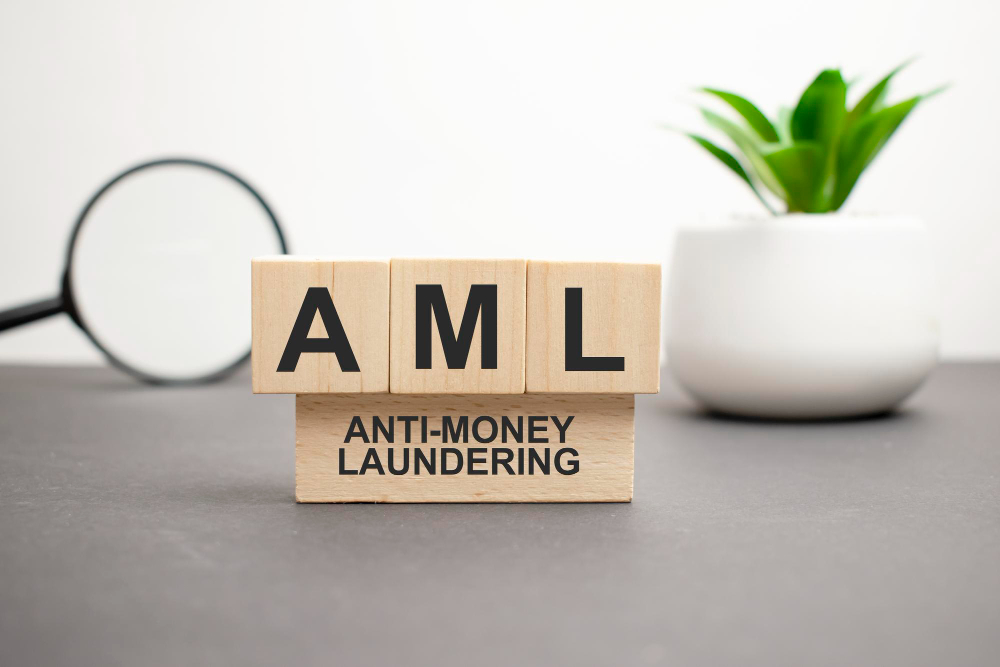AML, or Anti-money laundering software, was developed to help companies weed out suspicious or fraudulent financial activities. Companies and individuals carry out financial transactions every second, daily, and stand the risk of being victims of financial crimes. Although there are AML regulations in place, it will be challenging to go through its numerous steps without software explicitly designed for that purpose.
With the growing need for online financial transactions to be secured against fraudsters has come an increase in the number of AML software in the market. We will be skimming through the pool and highlighting the 5 best AML software in 2024.
Best AML Software for Small and Mid-Sized Financial Institutions
Quick View
- SEON – Overall Best AML software for small and midsize financial institutions
- Alessa – Best for Transaction Monitoring and Analysis
Transaction Monitoring and Analysis
Automation rules + transactions dashboard
Real-time + periodic + event-based monitoring
Risk Assessment and Profiling
AML fraud API + Device fingerprint
Risk scoring engine
Integration With Other Financial Systems and Tools
SDK + JavaScript
Connects with other AML software
Quick Verdict
Overall Best AML Software for Midsize Financial Institutions – SEON
SEON is the best tool for mid-sized financial institutions and organizations that are looking for convenient ways to track and prevent fraud. It provides small and medium-sized institutions with various tools for tracking customers, monitoring their digital footprint, and integrating with platforms to meet AML regulations.
Best AML Software for Small and Mid Sized Financial Institutions in 2024
SEON is a unique fraud detection management software built to help institutions manage transactions carried out on their platform to prevent fraud. Its integration feature allows institutions to set up proper KYCs to track their client’s financial journey.
Using machine learning models and data enrichment options, SEON improves safety for the customer and financial institutions like banks, Internet gaming and gambling, and lots more.
Transaction Monitoring and Analysis
SEON comes with an inbuilt transactions dashboard that provides full details and activities for tracking customer IP, time of the transaction, and suspicious behavior. Suspicious behavior might include transactions from users from high-risk zones or users with the wrong country address.
For a more streamlined approach towards transaction monitoring and analysis that meets AML regulations, SEON provides automation rules to help users create custom lists for transactions that need to be flagged.
Risk Assessment and Profiling
SEON profiles each customer to determine if they could be a potential threat to the system using risk assessment tools like device fingerprint and running name checks through sanctions lists. Another tool that aids with profiling and risk assessment is SEON’s AML fraud API. It provides comprehensive KYC details for a seamless risk assessment.
Integration With Other Financial Systems and Tools
SEON boosts the operations of financial institutions that utilize its platform by integrating with a wide range of financial systems and tools for an improved workflow. It integrates with top fintech solutions like Provenir, Teams, Google Sheets, and lots more.
These tools provide vital features like analytics and AML tools that help organizations comply fully with AML regulations. SEON uses SDK for Android and iOS integration and a Javascript code for browsers.
Pricing
- Free Plan – $0 per month (for 2000 API calls)
- Pro Plan – $299 per month (for 4000 API calls)
- Integrates with third-party institutions with ease.
- Eliminates fraudulent chargebacks for ticket sales.
- Provides some of the best KYC details, and even shows inactive email addresses.
- Needs to build more customizable dashboards.
- Only suitable for small and medium-sized organizations.
Alessa AML software is perfect for mid-sized and financial institutions that require fraud detection and prevention solutions. Alessa enables financial institutions to deal with the recurrent issue of false positives and gives insights needed for AML compliance reports.
In addition, Alessa’s automation tools allow financial institutions to automate any financial risk assessment function, speeding up the process and allowing employees to engage in more critical, less repetitive tasks. Alessa also provides tools for audit trails, analytics and reporting, and policy compliance management
Transaction Monitoring and Analysis
Alessa’s anti-money laundering software monitors and analyzes financial transactions using real-time, periodic, and event-based reporting and analysis tools that comply with AML requirements.
It also allows financial organizations to track their traditional money transaction outlets and compile STRs and SARs reports for analysis and submission to the appropriate bodies.
Risk Assessment and Profiling
Alessa uses a risk scoring engine to score every potential customer or user of the platform using custom-made risk models or any model specified by regulatory bodies.
The model takes the customer’s personal information, like name, country of origin, gender, etc., into consideration using Identity or KYC verification tools. Risk assessment and profiling on Alessa also covers sanctions lists and monitoring transactions as mandated by AML regulations.
Integration With Other Financial Systems and Tools
Alessa connects financial institutions with additional anti-money laundering tools needed for customer due diligence, KYC, and risk assessment via integrations. It helps organizations using Alessa to be fully compliant.
Pricing
No details on the current pricing plan are available to the public. Alessa provides custom quotes for all its users.
- Allows financial institutions to detect risks quickly with detailed alerts.
- Enables users to create custom-made risk-scoring models.
- Alessa support provides quick feedback on users’ issues while navigating the software.
- Several alerts can be overwhelming.
- No free trial or free pricing plan.
Best AML Software for Large Financial Institutions
Quick View
- MetaMap – Overall Best AML software for a large financial institution
- iComply – Best for Risk Assessment and Profiling
Transaction Monitoring and Analysis
AI + ML + anomaly detection + behavior profiling
Real-time alerts + watch lists + integrated software
Risk Assessment and Profiling
Predictive modeling + scenario planning tools
150 M+ database sources + facial recognition + fingerprint verification
Integration With Other Financial Systems and Tools
5000+, including QuickBooks
REST API
Quick Verdict
Overall Best AML Software for Large Financial Institutions – MetaMap
MetaMap‘s adaptable AML platform provides institutions of all sizes with different financial, business, and AML solutions. It is AI and machine learning tools businesses and financial institutions that help to enhance productivity without compromising financial safety.
Best AML Software For Large Financial Institutions In 2024
MetaMap helps financial institutions comply with regulatory requirements and prevent financial crime. It uses advanced data analysis and machine learning algorithms to detect suspicious activities, such as money laundering, terrorist financing, and fraud.
MetaMap can process large volumes of structured and unstructured data from multiple sources, including transaction records, customer profiles, and external databases.
It provides real-time alerts and generates comprehensive reports for compliance officers and regulators. MetaMap’s accuracy and efficiency make it a valuable tool for AML compliance in today’s fast-paced financial landscape.
Transaction Monitoring and Analysis
MetaMap leverages advanced technologies such as machine learning and artificial intelligence. It offers a comprehensive suite of tools for monitoring, analyzing, and investigating transactions. These tools include real-time transaction monitoring, anomaly detection, behavior profiling, pattern recognition, and risk scoring.
By providing actionable insights and alerts, MetaMap’s Transaction Monitoring and Analysis empowers financial institutions to proactively mitigate risks and safeguard against fraud, money laundering, and other illicit activities.
Risk Assessment and Profiling
MetaMap offers a range of specific tools designed to enhance risk analysis and profiling. These tools include advanced data analytics, predictive modeling, scenario planning, and real-time monitoring capabilities.
It helps businesses gain proper knowledge of their risk landscape, enabling proactive decision-making and strategic risk mitigation.
Integration With Other Financial Systems and Tools
MetaMap’s integration with various financial systems and tools revolutionizes financial management. It seamlessly connects with popular platforms like QuickBooks, Xero, and SAP, allowing effortless data transfer and streamlining financial workflows.
Also, MetaMap’s compatibility extends to budgeting tools like Mint and YNAB, which empowers users to monitor and optimize their finances comprehensively. Furthermore, its integration with payment gateways such as PayPal and Stripe ensures secure and efficient transaction processing.
Pricing Plan
- Free trial
- Request for Quote
- Enhanced Privacy
- Employs advanced encryption techniques.
- Enables users to browse anonymously.
- It has some compatibility limitations.
- Dependence on Third-Party servers
iComply offers a unique anti-money laundering (AML) solution by providing advanced machine learning tools to obtain customers’ information and analyze it according to AML regulations.
iComply solutions also include tools for handling client onboarding, workflow automation, AML, and KYC for fiat and ETH currency transaction management. Plus, iComply meets financial institutions’ AML needs with tools used for screening customers to identify all potential threats.
Transaction Monitoring and Analysis
iComply relies natively on watch lists for transaction monitoring and allows financial institutions to follow and apply security protocols to transactions as it occurs.
The best part is that iComply enables each institution to improve its monitoring, analysis, and reporting function by integrating monitoring tools for improved performance. And if any changes occur to a customer’s risk profile iComply provides real-time alerts for immediate action.
Risk Assessment and Profiling
Financial Institutions can utilize iComply on their platform for swift KYC procedures using fingerprint verification, facial recognition, and CDD enabled by screening the customers through a database of 150 million+ approved sources. iComply also uses fuzzy matching and Levenshtein distance algorithms AI and ML technologies to speed up profiling.
Integration With Other Financial Systems and Tools
Using the iComply integration tool, REST API financial institutions can upscale their financial operation to cover more actions that meet AML regulations.
Pricing
iComply AML software comes with a KYC cost calculator to help users get an estimated cost based on their unique needs. There’s also an option to speak with a representative to request a quote.
- Uses AI and machine learning AML technology.
- Provides AML support for cryptocurrency transactions.
- Integrates seamlessly with various platforms.
- Provides a cost calculator for getting estimates.
- Pricing plans are not readily available.
- Needs to add more native AML functions.
Key Features to Look for in AML Software
Transaction Monitoring and Analysis
One essential feature to look out for in AML software is its ability to analyze and monitor every transaction. The best AML software should come with KYC tools that enable organizations to watch every single deposit, transfer, or withdrawal conducted on the organization’s platform.
Using the KYC database, AML software will be equipped to track real-time transactions and review previous activities by customers to spot questionable transactions that would ordinarily be easy to miss.
Integration With Other Financial Systems and Tools
To meet demands for financial security, AML/CFT regulations were put in place by the authorities. The regulations require organizations to pass customers through several AML regulations checks.
This means before choosing AML software, it is crucial to check its ability to integrate with other financial systems that will aid it in providing 360° AML compliance.
Risk Assessment and Profiling
Another vital feature an AML software should possess is a reasonable risk assessment and profile tool. An efficient AML software should have tools to help organizations determine which regions and what kind of customers are prone to money laundering activities.
Look out for tools risk assessment and customer profiling automation tools regularly. This will help to pick up on changes in transactional patterns that could be linked to the financing of terrorism, tax evasion, etc.
Compliance Reporting and Audit Trails
AML software requires compliance reporting and audit trails to provide detailed reports that can be submitted to the appropriate bodies when needed.
Examine how the software collects and documents information about compliance violations and how it tracks and finds the correlations in fraudulent patterns. Reporting and auditing should have a real-time tracking feature for ease of operations and an improved workflow.
How to Choose the Right AML Software for Your Financial Institution
Selecting the right AML software for a financial institution is a significant step in ensuring the organization adheres to compliance regulations.
Financial Institutions are constantly evolving and providing new transaction tools, and the perpetrators of financial crimes are right on their heels. We’ll examine how a financial institution can choose the right AML software for its team.
Consider Your Institutions Budget
AML software makes various tiers of pricing plans available for users to subscribe to access its features and tools. However, none of the anti-laundering software is released by a single company, there is numerous AML software available from different vendors, and each one comes with a unique offer.
To pick the right software, financial institutions need to consider how much they are willing to invest in the software. Although there’s a tendency to gravitate toward cheaper software, it is also crucial to consider the software’s features and if it meets the institution’s needs. Carrying out a simple benefit and cost examination will help the institution strike a balance between meeting its compliance needs and staying within its budget.
Look Out For An Intuitive User Interface
The importance of having software with a user interface that is intuitive and easy to use cannot be overemphasized. An AML software user interface will determine how fast employees can get work done while using the software’s features to maintain a compliant system.
The right software should have well-placed features and tools, be easy to locate, and have the correct tags. Additionally, there should be a correlation between every tool listed under a specific part. Investing in intuitive software will reduce the hours spent onboarding employees, giving room for better efficiency.
Is It Compliant with Industry AML Regulations?
Financial Institutions are expected to meet the AML regulation requirements to prevent every act of tax evasion, terrorism financing, and other money laundering practices. The right AML software should have the necessary native and integrated features to enable the institutions to stay fully compliant to avoid sanctions.
Since compliance regulations are updated regularly, the software should also be adaptable enough to handle a few adjustments that will keep the institution compliant.
Ensure that All Operations can be Automated
Financial Institution’s activities have become more fast-paced over the years and require automation for risk assessment, suspicious activities, identifying false positives, etc. Through automation, these organizations can increase productivity and track money laundering crimes as it occurs. Giving room for quick preventive or corrective actions against the perpetrators.
Choose software that incorporates Artificial Intelligence and Machine Learning models to gain and document insights that will help prevent fraud in the future using patterns observed from past data.
Implementing AML Software: Tips for Success
Implementing AML software is critical for institutions to comply with regulations and prevent financial crime. However, the process can be complex and overwhelming. Here are some tips to help your organization pull through effectively.
Communicate the Benefits to your Team
It is essential to communicate the new system’s benefits to your team. This will help them understand the importance of AML compliance and make them more invested in the success of the software.
Some benefits highlighted during the onboarding process could be increased efficiency, improved accuracy, and reduced risk of fines and legal consequences.
Also, they can be led to understand that implementing AML software can lead to a better reputation for your organization and increased trust from customers and stakeholders.
Set Clear Goals and Expectations
Although implementing AML software is daunting for any organization, setting clear goals and expectations can help ensure it is successful.
When setting goals, it is crucial to consider your organization’s specific needs and what you hope to achieve with the software. This could include reducing compliance risks, streamlining processes, or improving reporting capabilities.
Furthermore, communicating expectations to all stakeholders involved in the implementation can help ensure everyone is on the same page. By setting clear goals and expectations, your organization can increase the likelihood of a successful AML software implementation and improve your overall compliance posture.
Train your Team on How to Use the Software
When implementing AML software, training your team on how to use the software is an essential step for success.
Many organizations assume that employees will figure out the software independently or that they can rely on a handful of experts to handle it. However, this approach is often ineffective and can lead to errors and inefficiencies.
Instead, take the time to provide thorough training for all team members using the software. This training should cover everything from interface navigation to more advanced features and functionality.
Provide Ongoing Support and Resources
It’s essential to train your team on the new software thoroughly. Make sure they understand its features and how to use it effectively. You can also provide ongoing training as new updates are released.
Additionally, ensure your team can access user manuals, troubleshooting guides, and customer support. This will help them overcome any obstacles they encounter while using the software.
By investing in your team’s education and support, you can successfully implement AML software and improve your organization’s compliance efforts.
Continuously Evaluate and Refine your AML Program
AML compliance is an ongoing process that requires a thorough understanding of the latest regulations and technology. Therefore, you should encourage your team to stay up-to-date with industry trends and best practices to ensure the program is effective and efficient.
Regularly reviewing and analyzing the program’s performance can identify any gaps or areas for improvement. It is crucial to involve all relevant departments and stakeholders to ensure a comprehensive approach. With proper training and evaluation, your team can successfully implement and maintain a robust AML program.
Frequently Asked Questions
Conclusion
New changes are continually introduced by regulatory bodies to govern the way customers deposit or withdraw funds with the aid of financial institutions in a bid to check money laundering.
AML software helps organizations simplify the process of adhering to anti-money laundering requirements and allows them to transition swiftly once new regulations are implemented.
The 4 best AML software in 2024, including SEON and MetaMap, provide financial institutions with the best features, tools, and integrations needed to manage their teams and ensure that all transactions conducted using their channels are fully AML compliant.
 Sections of this topic
Sections of this topic




















